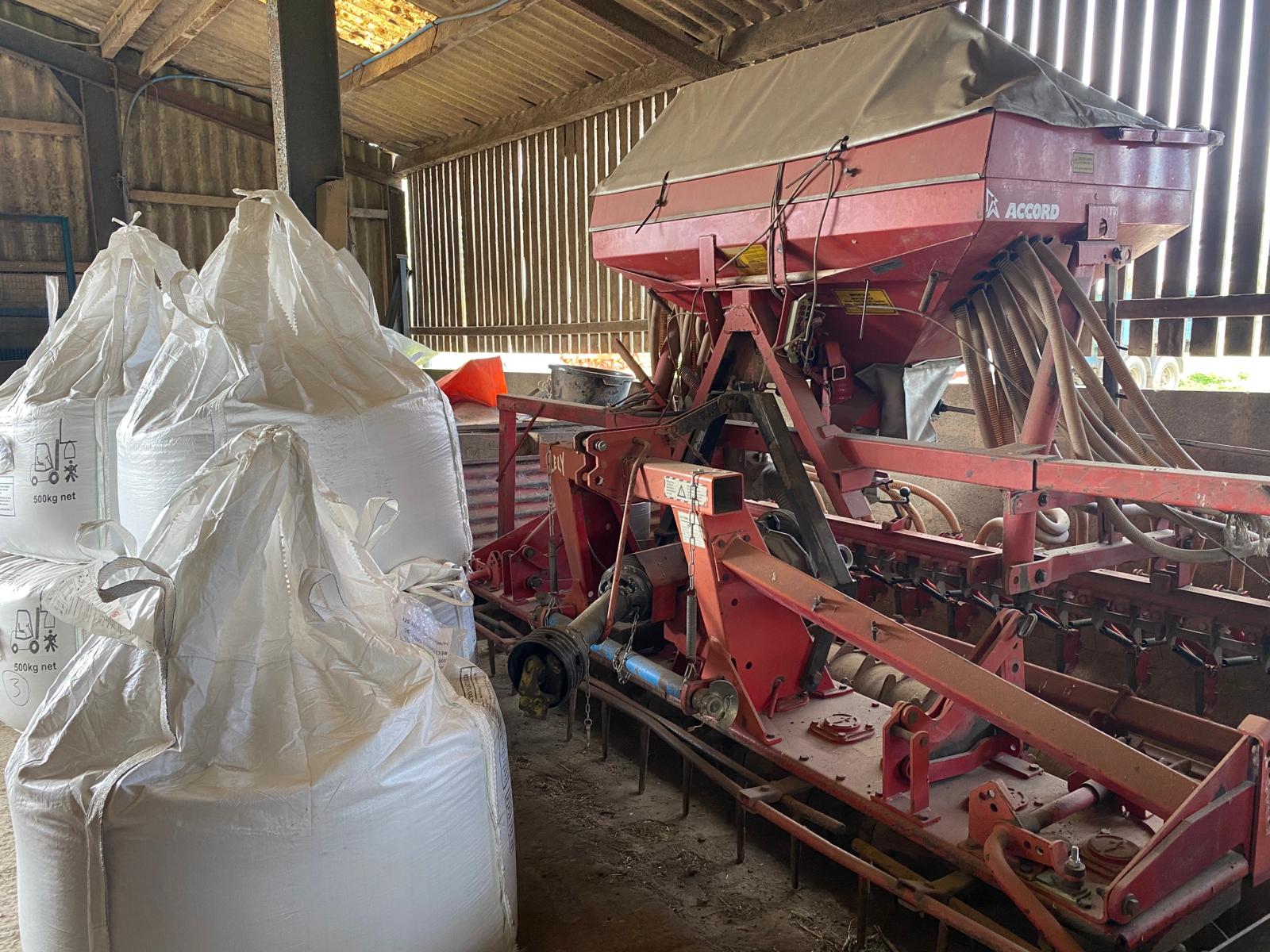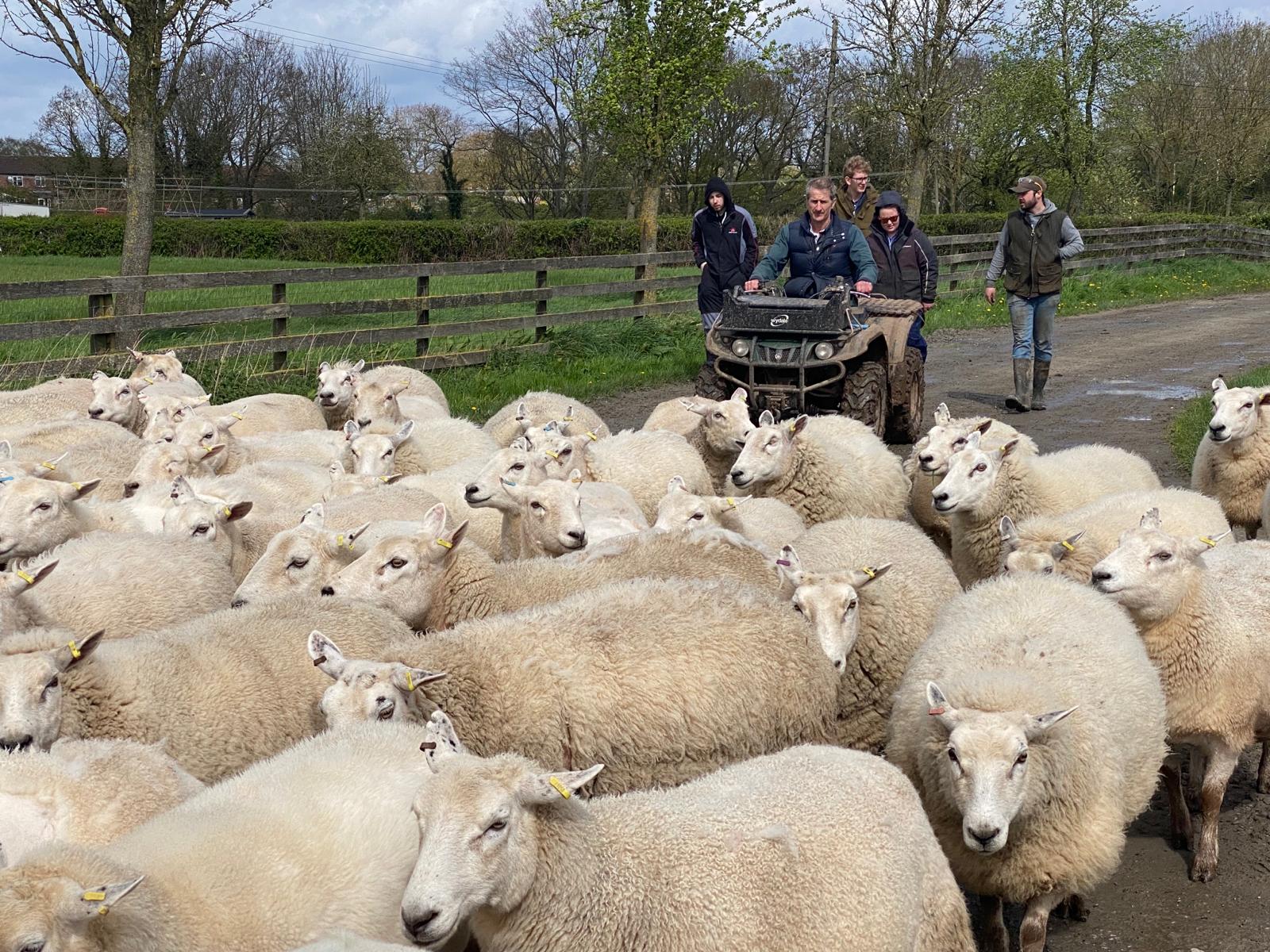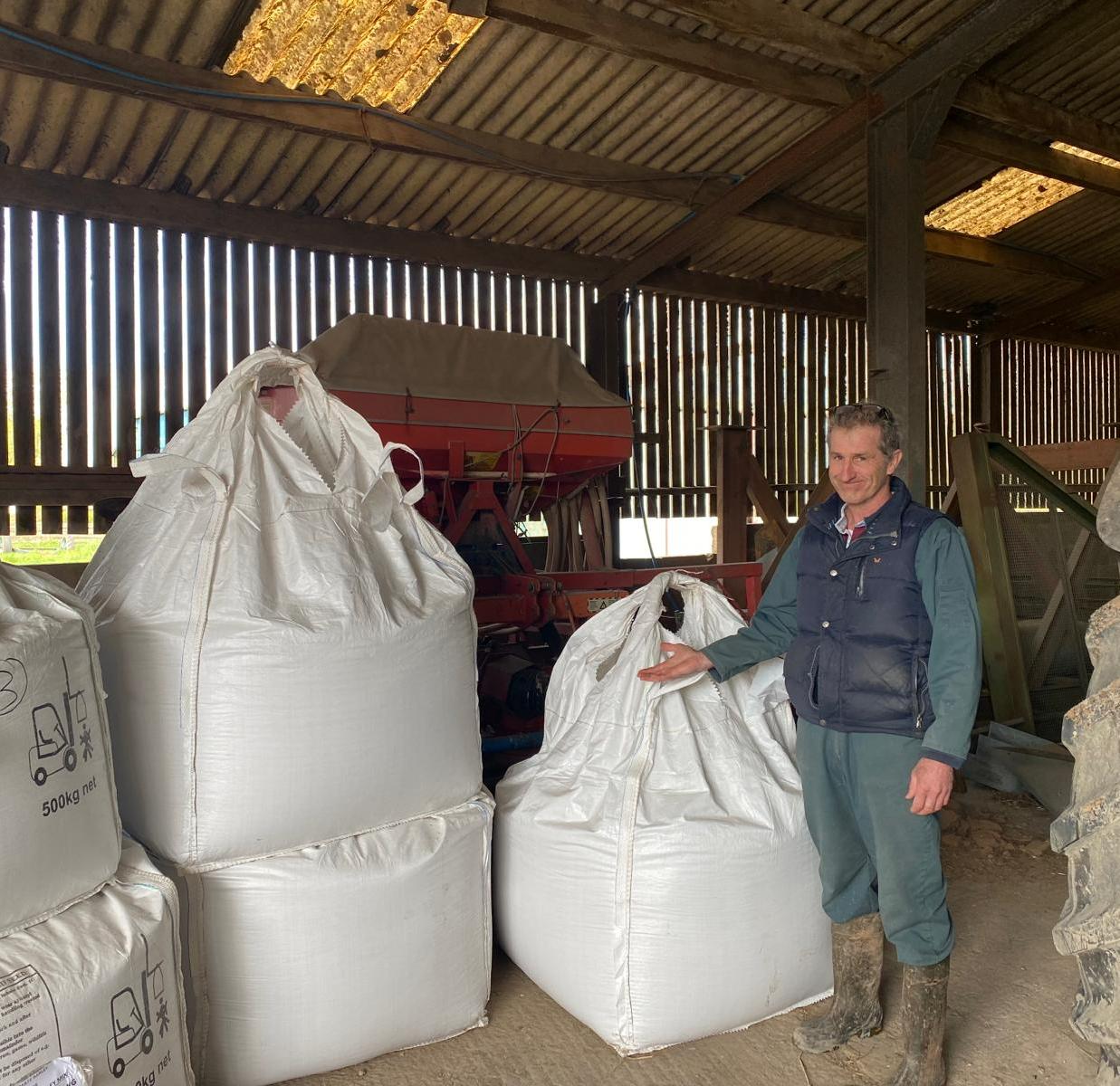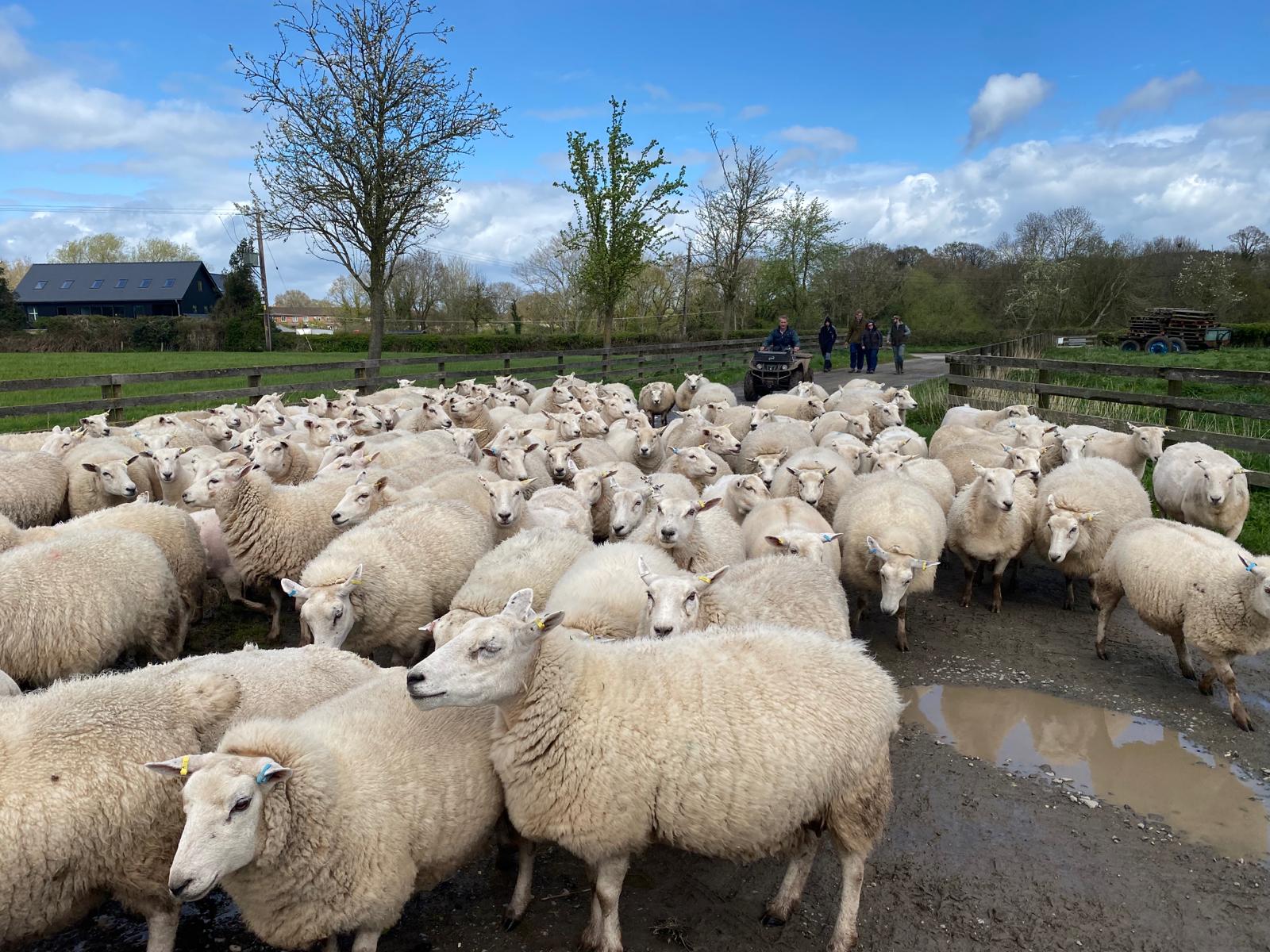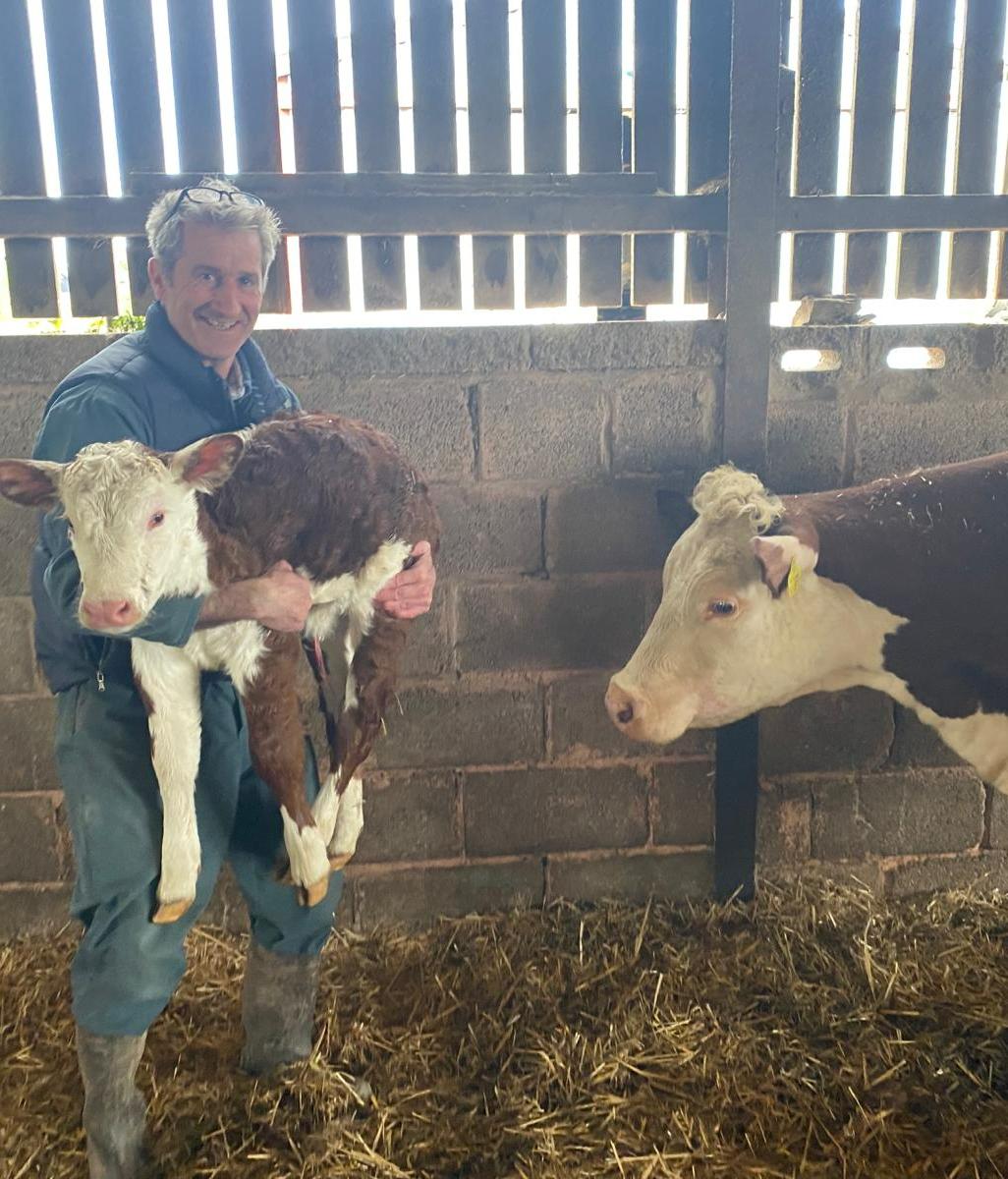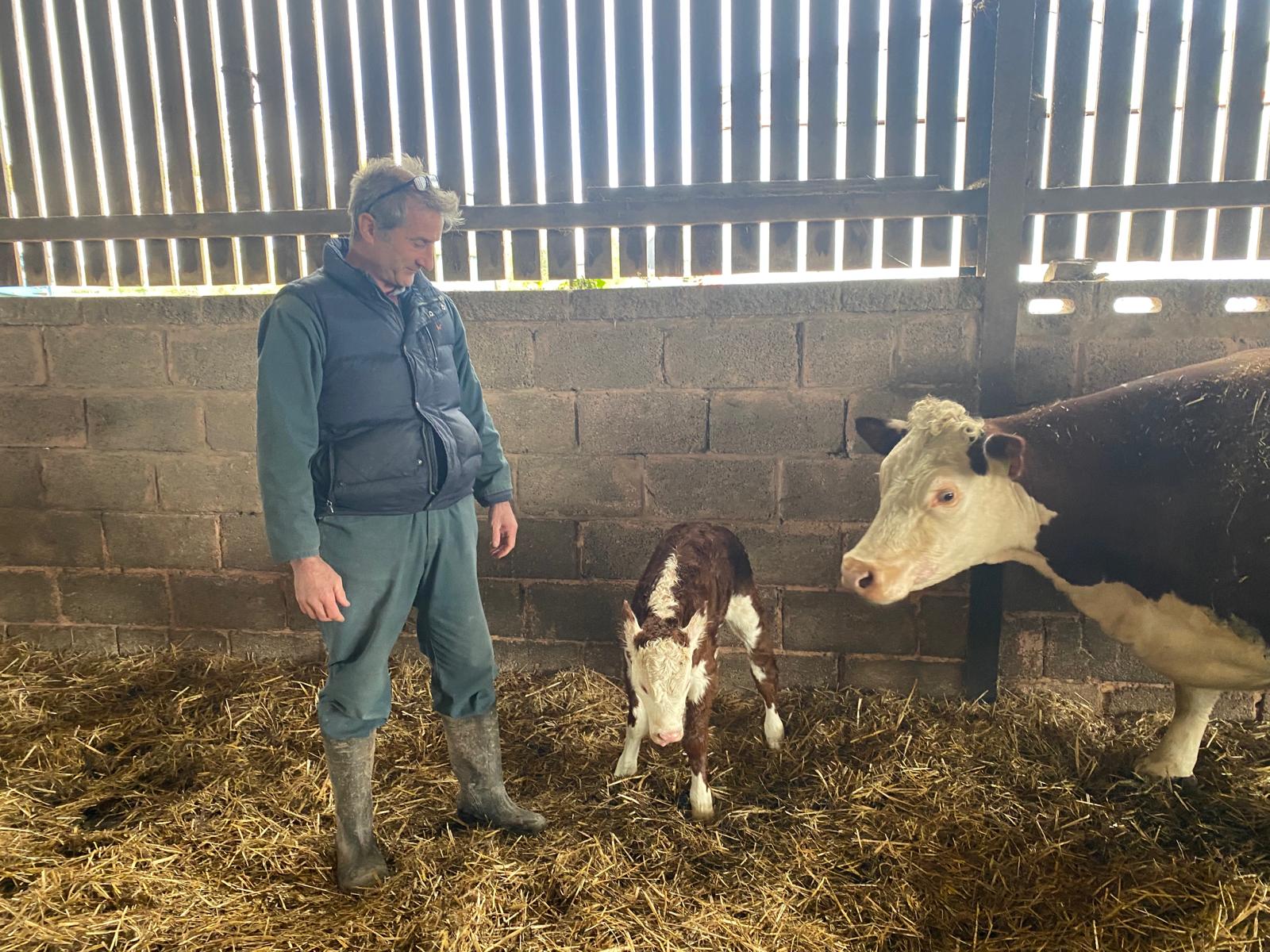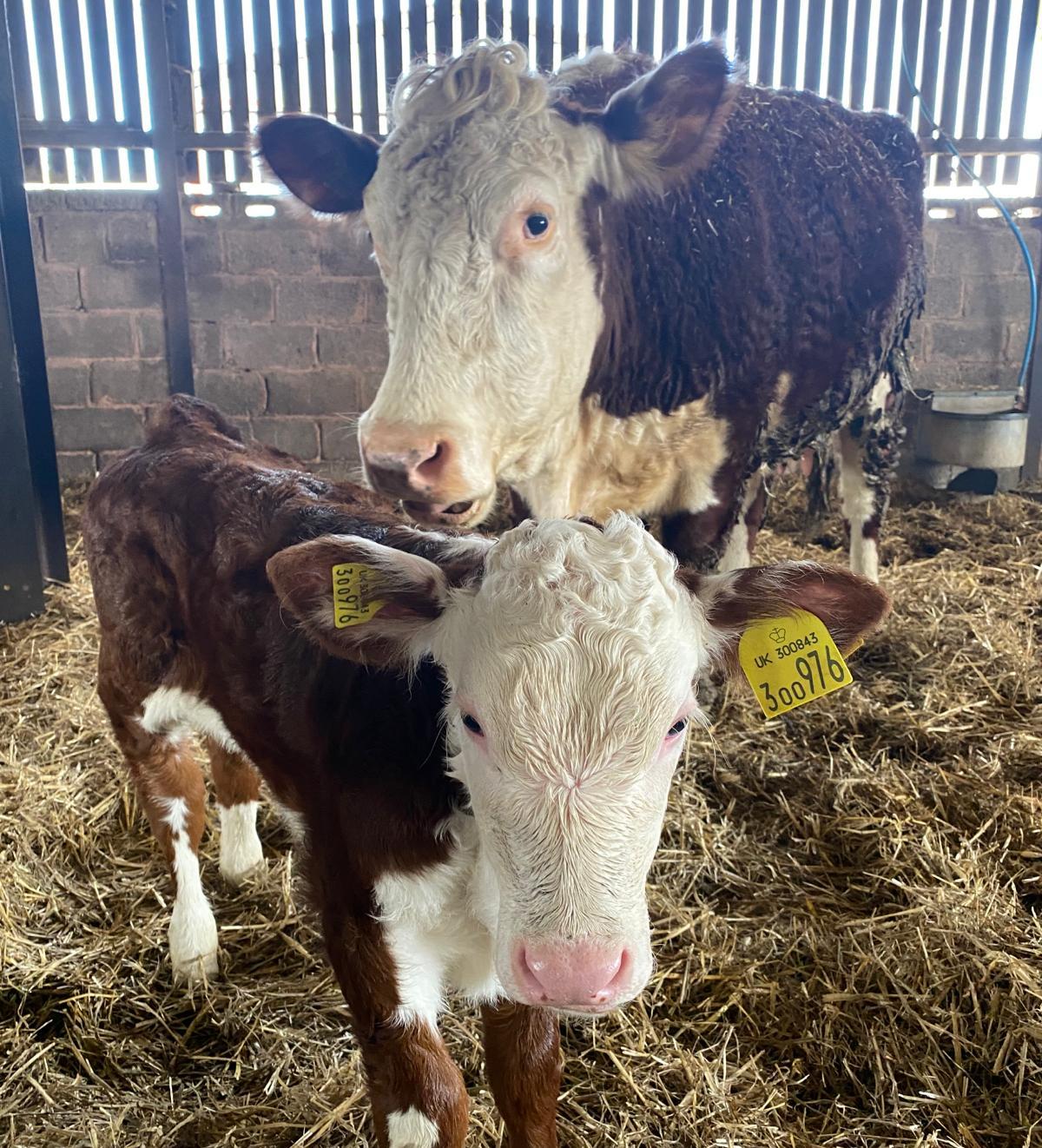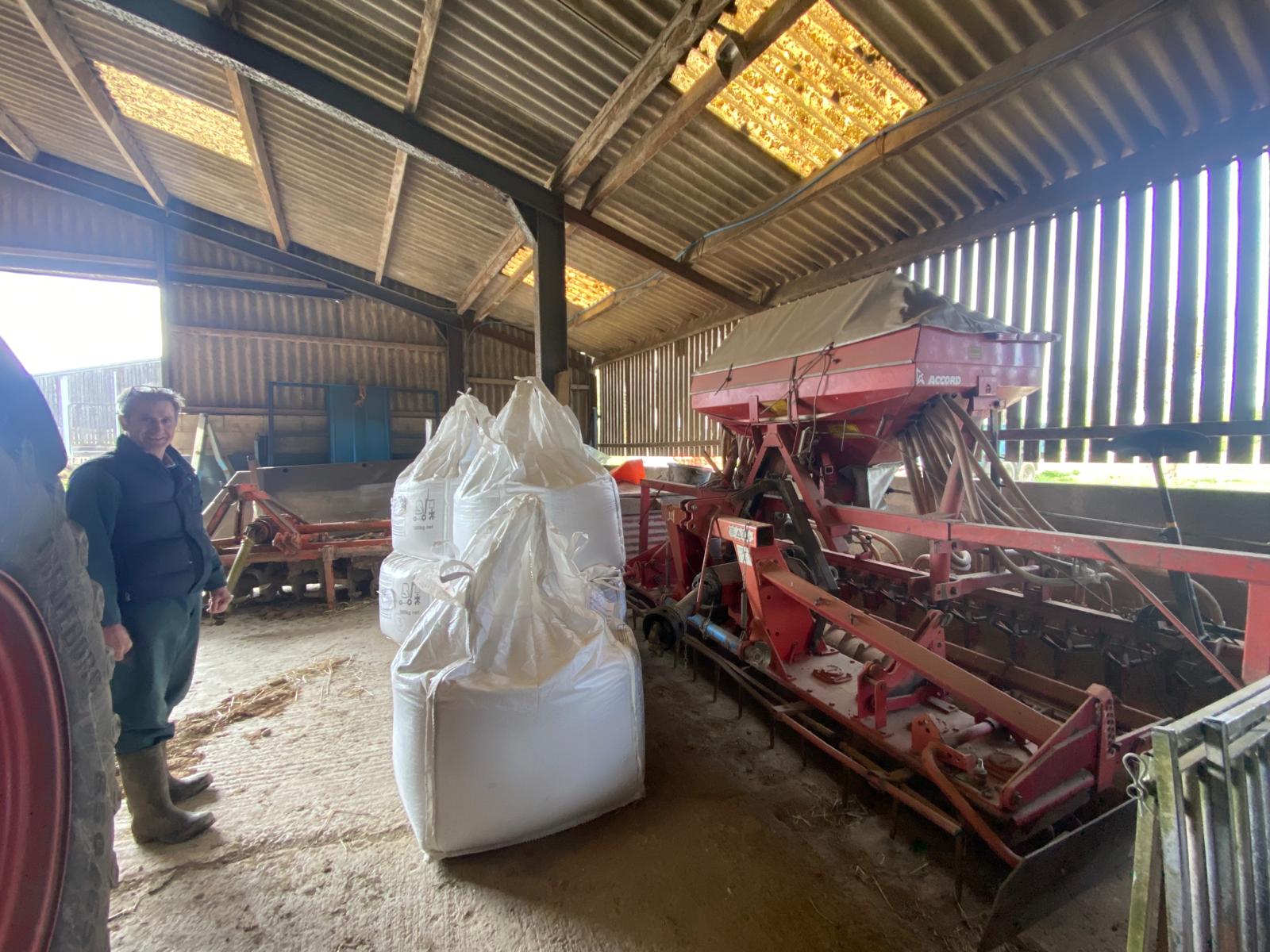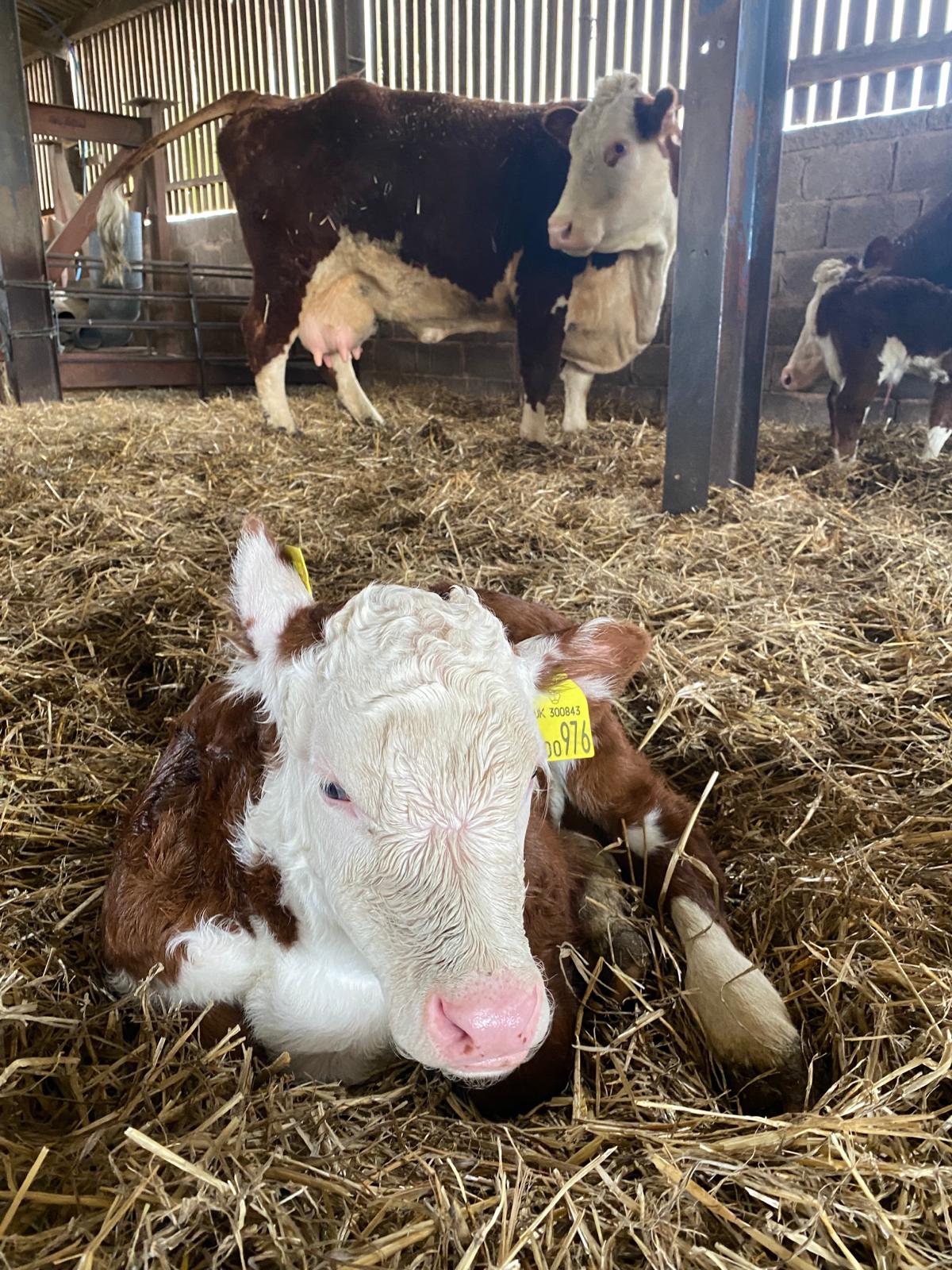Dan Seaborne
Pound Farm, Hereford & Ludlow College
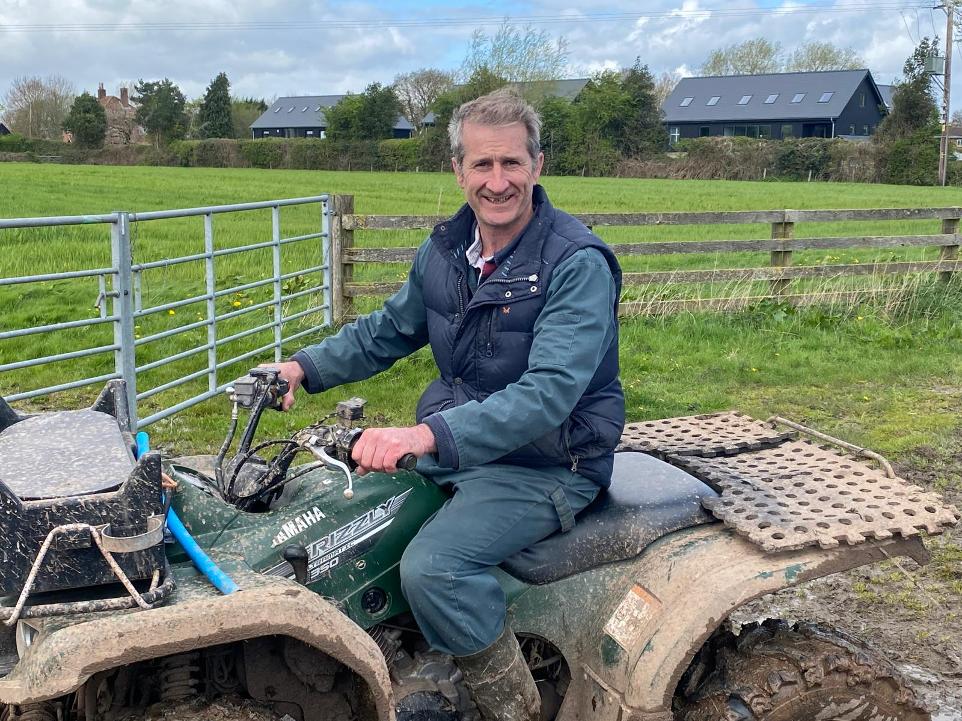
Setting the Scene
Dan has spent his whole life in farming, having grown up on a farm, and has been at Pound Farm for the past 30 years, 26 as Farm Manager. The farm is owned by Hereford and Ludlow College, on the Holme Lacy Campus, dedicated to agriculture and horticulture, with a Centre for Rural Crafts. The mixed farm has its own pedigree herd of Hereford cattle, sheep, combinable crops and potatoes. The College chose to convert the farm to Organic due to the favourable grants in the early 2000s and the College's ethos of sustainability.
| Farm Name | Pound Farm |
Cash Crops (Ha)
|
114 |
| Farm (Ha) | 224 | Herd Size |
45 suckler cows,
350 ewes |
|
Owner/Tenant
|
Employed Farm Manager
|
Soil Types
|
Sandy loam (alluvial) to clay loam
|
|
Years Farming (Organic)
|
30 years (22 years)
|
Annual Rainfall (mm)
|
660
|
|
Main enterprise
|
Mixed; beef, sheep, arable, potatoes
|
Total HP |
Rotation Dan has a seven year rotation with two years of herbal leys two to three years of cereals, a cereal-legume bi-crop and a legume at the end of the rotation keeping fertility going through the five years of cropping. Almost all the grain is sold, with the oats grown for White's, but some grain is fed on farm if required.
|
Diverse Herbal Ley>
|
Diverse Herbal Ley>
|
Winter Wheat (4.0t/ha)>
|
Winter Oat (4.2t/ha) / Potatoes (35t/ha)> | Pea/Barley bi-crop (3.6t/ha)> | Winter Oats (4.2t/ha)> | Winter Beans (3.4t/ha)> |
Agronomic Approach
Dan describes his approach as a "shut gate policy". Once the crop has been drilled he tends not to manage it until it's time to harvest. Having said that, if conditions are just right and if he feels some comb harrowing can be effective at weeding and mineralising some nitrogen, he will consider it. Dan sees the leys as part of his weed control strategy. Crop establishment is through ploughing and combi-drill. Fertility is provided by the ley, as well as cattle and sheep muck and some green waste compost. FYM from the cattle is applied to Winter wheat stubble, ahead of potatoes or Winter oats, at 20t/ha. Last season, slurry liquor from a local organic dairy was used for the first time, applied to the grass and to wheat. If the pH drops to 6, lime is applied.
| Worst Weeds | Issues |
| Wild Oats | Very competitive and proliferate quickly, yield robbing |
| Charlock | Competitive, yield robbing |
| Docks | competitive and stubborn but they are non-toxic, good for the soil, seeds easy to clean out of grain and they leave no taint. |
Dan is one of the most consistent growers when it comes to oat quality, and is consistently in the top ten for White's. Dan applies FYM ahead of his first crop of oats, with the second crop following a pea-barley bi-crop, so the oats have plenty of nitrogen available to them.
| Most "reliable" crop | Winter Oats 4.2t/ha | Least "reliable" crop | Potatoes 25 to 50 t/ha (boom/bust) or Beans. |
Key Agronomic Challenges
Biggest Agronomy Question: How to reliably improve yields and quality. Would like to aim for another 1t/ha
Looking after the soil, improving organic matter, "leaving the land in better heart"
Weeds are getting worse, particularly wild oats and charlock. Would also like to be increasing organic matter faster
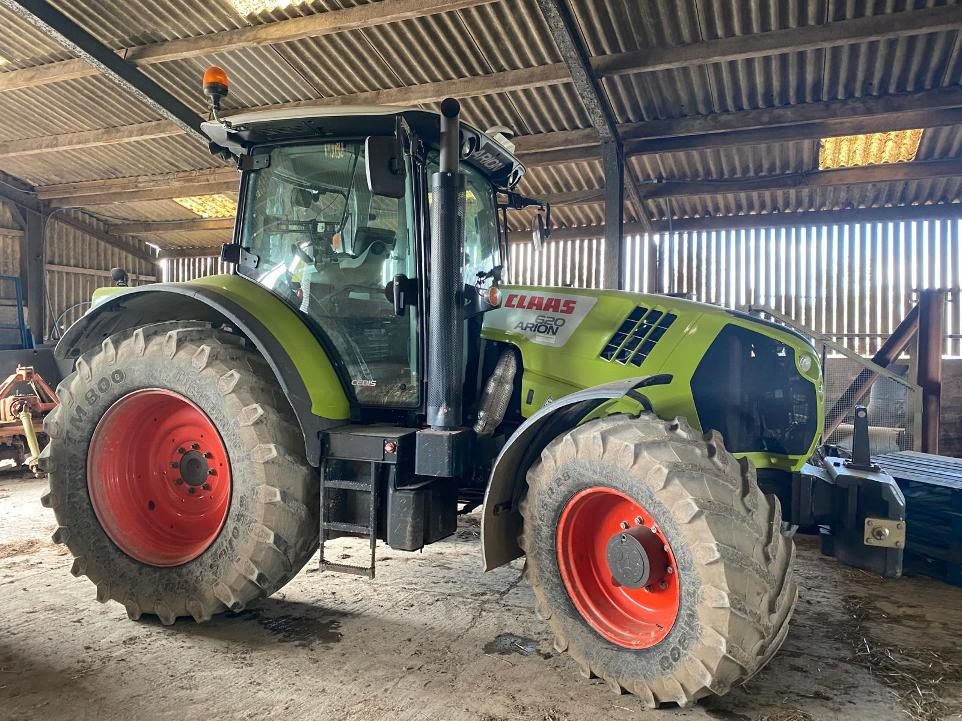
Machinery
Dan uses an Accord power harrow combi-drill with 12cm spacings. He used to drill on wide row spacings and use a camera guided hoe. Trials with Garden Organic suggested that the weed control was similar between wide row hoeing and narrow row comb harrowing, which supported Dan's impressions, encouraging a move back to narrow rows which is a cheaper system to run. Dan uses a 9m Einbock to harrow crops, and would like to use a comb-cut if one was available nearby on contract.
Best machinery Purchase: The plough!
Worst machinery Purchase:
Camera guided hoe
Total horsepower: 460 HP. Two 130hp tractors class 620 and JD 6530
Worst moment in farming
2012 was a difficult year for both crops and livestock in a very wet season.
The biggest organic lesson learned?
My worst mistake was not vaccinating lambs against pneumonia.
Where do you see yourself and the farm in 10 years time?
Thinking about retiring.. feel double aged as I get older the students stay the same age!
What do you know now that you wish you'd known when you started farming organically?
Should have stayed on top of wild oats at the start… should have rogued more!
Best moment in farming
Farming has an ugly and a beautiful side, and sometimes feels like the best job in the world, but also the worst. I think I'm still waiting for my best moment!
The best organic advice you've received?
I was taken on farm visits by Mark Measures when I first became Organic and it was really valuable in helping me feel more confident about what I was doiing
Best piece of advice you'd offer an organic farmer?
Speak to other Organic farmers and visit their farms.
Did you have an epiphany moment? If so, what was it?
The best thing about being Organic is that you're more in control, and that your decisions matter more, for good or bad.
"Try new things and test ideas on your own farm. Research is the best way of learning"
